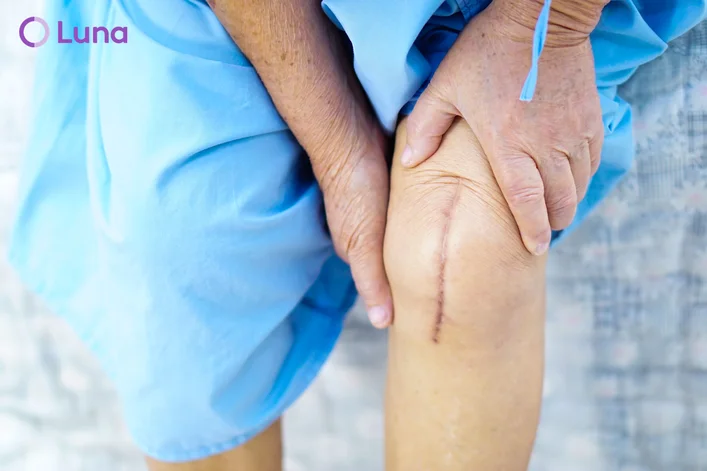
Meet with the best spinal fusion physical therapists in Somerville, Massachusetts
Somerville, Massachusetts, Luna’s physical therapists specialize in helping patients recover from spinal fusion surgeries. With the knowledge and experience required when dealing with such a complex surgery and recovery process, Luna PTs can have you back on your feet – and back to the activities you love — in no time.
Best of all, with Luna, patients can get on-demand physical therapy for spinal fusion surgery recovery wherever it’s most convenient — our physical therapists come to you.

What is spinal fusion?
When instability in the spine causes a patient chronic discomfort, it’s possible that their doctor will recommend spinal fusion surgery. True to its name, this procedure involves “welding” two vertebrae together to form a single bone, restoring stability to the spine.
In addition to eliminating motion between the two vertebrae, spinal fusion surgery also prevents the surrounding ligaments, muscles, and nerves from overstretching. Theoretically, if spinal motion is a source of pain, freezing the painful vertebrae should permanently eliminate the pain — however, the surgery is recommended only if doctors are certain that spinal motion, and not some other factor, is the source of pain.
To perform spinal fusion surgery, the surgeon will use a bone graft to prompt the vertebrae to fuse. The bone graft, which helps to stimulate bone production and healing, can be harvested from a bone bank, collected from the patient’s body, or made of synthetic material. After the bone graft, the spine will be immobilized for several weeks to allow for fusion and healing.
Source: OrthoInfo

Physical therapy for spinal fusion in Somerville, Massachusetts
Physical therapy is a vital component of recovery from spinal fusion surgery. That said, there’s no one-size-fits-all physical therapy regimen, as the surgeon may access the spine through the front, back, sides, or some combination of the three. For that reason, it’s vital that patients work closely alongside a licensed and experienced physical therapist throughout their recovery.
Generally, however, the patient will be encouraged to take short walks beginning as soon as one day after surgery. Similarly, it’s recommended that patients begin to stretch their hamstrings and quads within the first week following the procedure. Failing to engage the legs soon after surgery can result in adhesions or scarring.
Later on in the recovery process, a physical therapist can lead the patient through static stabilization exercises, including a pelvic tilt and bridge. Between six and twelve weeks after surgery, it should be safe for the patient to begin dynamic exercises that involve movement in the core.
Source: Spine Health

















